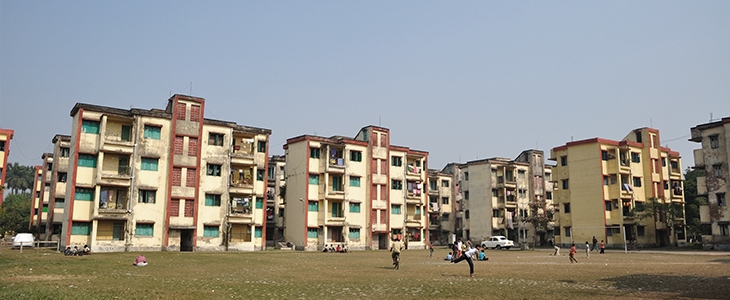
Saturation and Collaborative Construction; a Way Out of the Conundrum
17 April 2017
This is the sixth part of the Raghu Bytes series on ‘Avoiding Accountability’.
The example that I gave in my last blog of how a politician attempted to rid the rural housing programme for the poor of its high potential for manipulation, has much more to it than meets the eye. Ridding programmes for the poor of the constraints of annual targets and aiming for hundred percent saturation, can reduce the premium on queue jumping, or wrong prioritisation of beneficiaries. If everybody is going to get houses in a village, then why would anybody bribe new power brokers such as computer operators, to have their names recorded electronically? Would not the problem be solved?
But then, such approaches, to be effective, have to be backed up by other improved processes as well. For example, even if all the poor in a village were to be given houses, construction of homes might become a bottleneck. That would shift the power-broking potential from the computer operators to the contractors. Furthermore, money has to flow regularly to the contractors if their construction activities are not to grind to a halt.
For long, the housing programme has been a leader in decentralised implementation. It was one of the first programmes to involve beneficiaries directly in implementation. Even if they had to pay bribes to get selected in the first place, once selected, beneficiaries were permitted to build homes for themselves and payments were made to them at different stages of house construction. Thus, to a large extent, contractors skimming off bribes from beneficiaries and passing them upwards, was reduced as compared to what happens in other programmes.
However, did that eliminate corruption in implementation? Not by a long shot.
Even though beneficiaries were building homes for themselves, they still had to run the gauntlet of meeting officials to collect their entitled payments. The process was manual and involved many stages; all of which provided ample scope for bribery. Thus, if a beneficiary family’s home had reached the plinth stage – a trigger for the first payment of subsidy – that needed to be certified by an engineer from the Block Development Office (BDO), as also by the Villlage Panchayat Secretary. Then, the bill had to be cleared by the accounts section in the BDO’s office, which meant that beneficiaries had to waste time traveling to the Block Headquarters, and paying speed money to get their payments expedited. The payment was cashless; which meant more visits to bank branches, to encash cheques and withdraw money. All these processes were corruption prone, to say the least.
None of these would undergo the slightest difference, even if well-meaning politicians and bureaucrats were able to ensure 100 percent coverage of all beneficiaries.
The solution could be technology, as a friend of mine who works in the subsidised housing sector suggests. If the process of recording progress in construction is through photographs that accurately captures both time and location, and that automatically triggers payments into the bank account without human intervention, then beneficiaries need not grease the palms of those who sanction payments. However, the first question that arises, is that technology could be hacked and false records created to show progress. My friend says that such possibilities, whilst they will always exist, could be overcome by immediately placing all payment progress in the public domain. Thus, if Panchayat elected representatives, officials and beneficiaries all have access to real-time data on payments made to beneficiaries for construction, based upon photographic records, then a system of public checks and balances might be put in place.
The idea is thought provoking. The best way to check if it is an effective solution to the problem is to implement it. If it raises howls of protest from currently empowered computer operators, block level accountants, BDOs and MLAs, then it can be presumed that it would be an effective measure in reducing corruption in housing programmes.





